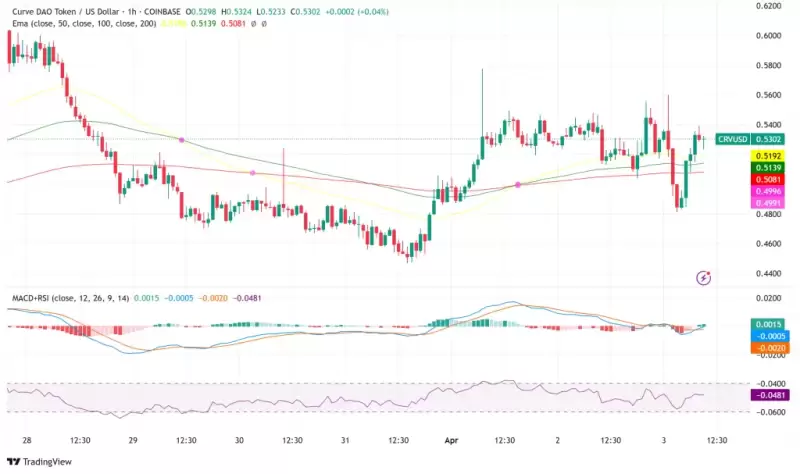 |
|
 |
|
 |
|
 |
|
 |
|
 |
|
 |
|
 |
|
 |
|
 |
|
 |
|
 |
|
 |
|
 |
|
 |
|
Cryptocurrency News Articles
LSP Protocol: A New Solution to Improve PoS Network Security and Capital Utilization
Jun 12, 2024 at 01:36 am
Staking is usually the main way to maintain the security of the PoS network. For a PoS network, the more and more dispersed assets in the network participate in the validator staking, the better the network's security.

Singapore, June 11, 2024 (GLOBE NEWSWIRE) — Staking is usually the main way to maintain the security of the PoS network. For a PoS network, the more assets in the network participate in the validator staking and the more dispersed they are, the better the network’s security. Usually, starting from the PoS network itself, they provide incentives to validators, firstly to reward them as contributors, and secondly to encourage more validators to participate in network staking and verification.
In fact, for any PoS network, it is unrealistic to allow token holders to independently participate in the network validator staking. One is the cost perspective. For example, the minimum threshold for Ethereum’s PoS validator is 32 ETH. Based on the price of ETH 3,800 US dollars, the cost threshold to directly become a validator is about 121,600 US dollars, but the APR is only 2.21%, and the capital utilization rate is extremely low. On the other hand, the staker needs to have the ability to run the client independently to avoid fines. Overall, it is unrealistic for non-professional token holders to directly participate in the staking of any network as a validator.
Therefore, the emergence of the liquidity derivative pledge track, namely LSD, just solves the above pain points. On the one hand, token holders can entrust token pledges to the LSD protocol (no capital scale is required, usually assets worth tens or even tens of US dollars can participate), and the protocol will participate in the pledge of the PoS network on behalf of the pledger, and return part of the income to the pledger. At the same time, the LSD protocol will also return an LST token to the pledger, which is equivalent to the value of the pledged assets and can be used to obtain new income in LSTFi to improve the utilization rate of funds. This has a good driving effect on improving the pledge rate of the PoS network.
Except for the Ethereum ecosystem, other ecosystems are not large in LSD
However, from the current LSD track, except for the Ethereum ecosystem, the LSD scale of other networks is not large. On the one hand, in terms of scale, the current liquidity pledge scale of Ethereum is 13 million Ethereum, about 50.23 billion US dollars. According to the current 32 million Ethereum participating in the pledge in the Ethereum beacon chain, the liquidity pledge accounts for about 40.6%.
In addition to Ethereum, other PoS ecosystems such as Cosmos and BNB Chain are relatively small in scale, and the ratio of liquidity staking sources is not high. For example, among the ATOM tokens staked by Cosmos, although its overall staking rate is as high as about 63%, only about 2% comes from liquidity equity.
On the other hand, although LSD projects are rising, the leading LSD protocols represented by Lido, Rocket, Binance Staked, etc. have obvious monopoly effects in the field of ETH LSD staking, among which Lido alone accounts for 75% of the entire ETH LSD market share, and the market share of emerging LSD protocols is extremely low. In particular, the leading LSD protocols such as Lido are centralized models, which may have the risk of monopolizing most of the proportion, reducing the overall income of the LSD sector, and reducing the staking desire of the pledgers. In addition, excessive concentration of funds may cause security risks to the PoS ecosystem.
In addition to LSD, the re-staking track centered on EigenLayer, namely the LRT track, is also centered around the Ethereum ecosystem. Some LRT protocols including Kyper DAO, Renzo, Ether.fi, EigenPie, YieldNest, Swell, etc. are all built around LST and ETH assets to provide staking services, and lack support for native tokens on other chains. Similarly, EigenLayer also has shortcomings in maintaining network security. For example, in a PoS network, if EigenLayer’s incentive mechanism conflicts with the existing PoS incentive mechanism, it may reduce the validator’s commitment to network security. EigenLayer may cause some validators to gain more rights and control, thereby increasing the centralization risk of the network. Centralized networks are more vulnerable to attacks and manipulation, weakening overall security.
So overall, LSD and LRT may not be the best solutions for PoS ecosystem to obtain security:
* The LSD sector is severely monopolized and centralized. The scale of pledged income has decreased due to monopoly and it threatens the security of the PoS network, which deviates from the original intention of PoS.
* The multi-layer nesting model of LSD and LRT is risky, especially since some of the leading LSD protocols are too large in scale. Once a security problem occurs and a run occurs, it will be catastrophic for the Ethereum ecosystem. The Terra ecosystem is a lesson for this.
* The LSD and LRT tracks are mainly based on Ethereum. It is difficult for other PoS ecosystems
Disclaimer:info@kdj.com
The information provided is not trading advice. kdj.com does not assume any responsibility for any investments made based on the information provided in this article. Cryptocurrencies are highly volatile and it is highly recommended that you invest with caution after thorough research!
If you believe that the content used on this website infringes your copyright, please contact us immediately (info@kdj.com) and we will delete it promptly.
-

- Pi Network Price Crashes Hard as Binance Skips the Token in Its Latest Vote to List Initiative
- Apr 03, 2025 at 03:00 pm
- Pi Network supporters are once again left frustrated as Binance skips the token in its latest Vote to List initiative. This marks the second time the world's largest exchange has ignored Pi, shutting down hopes of an imminent listing.
-

-

-

-

-

-

-

- Bitcoin (BTC) ETF Inflows Have Surged Again as Investors Ignore Trump's Reciprocal Tariffs
- Apr 03, 2025 at 02:45 pm
- Inflows into spot Bitcoin ETFs have surged once again as investors chose to look past the Trump reciprocal tariffs. The net inflows across all US ETFs for Bitcoin stood at $220 million
-

























































